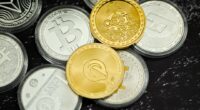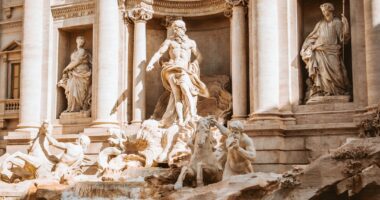Non-fungible tokens, commonly referred to as NFTs, have emerged as a revolutionary concept in the digital landscape, fundamentally altering how we perceive ownership and value in the virtual realm. Unlike cryptocurrencies such as Bitcoin or Ethereum, which are fungible and can be exchanged on a one-to-one basis, NFTs are unique digital assets that represent ownership of a specific item or piece of content, often linked to art, music, videos, or even virtual real estate. Each NFT is stored on a blockchain, a decentralized ledger that ensures transparency and security, making it nearly impossible to duplicate or forge.
This uniqueness is what gives NFTs their value; they are not interchangeable and often come with distinct attributes that can appeal to collectors and investors alike. The rise of NFTs has been fueled by a growing interest in digital art and collectibles, as well as the increasing acceptance of blockchain technology across various industries. Artists and creators have found new avenues for monetizing their work, allowing them to sell directly to consumers without the need for intermediaries.
This shift has democratized the art market, enabling emerging artists to gain recognition and financial support while providing collectors with access to a diverse range of digital assets. However, the NFT space is not without its challenges; issues such as environmental concerns related to energy consumption in blockchain transactions and the potential for market volatility raise questions about the sustainability of this burgeoning market. As we delve deeper into the world of NFTs, it becomes essential to understand these foundational concepts to navigate the complexities of this innovative yet unpredictable landscape.
Key Takeaways
- NFTs are unique digital assets that represent ownership of a specific item or piece of content.
- Research the artist and the NFT’s background to understand the context and significance of the NFT.
- Evaluate the rarity and scarcity of the NFT to determine its potential value and desirability.
- Assess the demand and market trends for similar NFTs to gauge the potential resale value and marketability.
- Examine the utility and potential future value of the NFT to understand its long-term investment potential.
- Consider the authenticity and ownership rights of the NFT to ensure its legitimacy and legal standing.
- Seek expert advice and consult with other collectors to gain insights and perspectives on the NFT before making a purchase.
Researching the Artist and the NFT’s Background
Understanding the Artist’s Background and Reputation
When considering an investment in an NFT, it is crucial to research the artist behind the work. The artist’s reputation and history significantly influence the perceived value of their digital creations. Established artists with a strong following can command higher prices due to their track record and recognition in the art world. On the other hand, emerging artists may offer unique opportunities for growth and investment potential.
Examining the NFT Itself
Comprehensive research on an NFT involves more than just understanding the artist’s background. It is equally important to investigate the specific NFT in question. This includes understanding its creation process, the story behind it, and any unique features that set it apart from other digital assets. Some NFTs may be part of a larger collection or series, adding layers of significance and value.
Gathering Comprehensive Information for Informed Decisions
Exploring the artist’s engagement with their audience, such as their social media presence or participation in exhibitions, can provide clues about their marketability and future potential. By gathering comprehensive information about both the artist and the NFT itself, collectors can make informed decisions that align with their investment goals. This thorough research enables collectors to navigate the NFT market with confidence and make informed investment decisions.
Evaluating the Rarity and Scarcity of the NFT

Rarity and scarcity are fundamental concepts that play a pivotal role in determining the value of an NFT. The more limited an asset is, the more desirable it tends to become among collectors. Many NFTs are intentionally designed with a finite supply; for instance, an artist may choose to mint only a certain number of copies of a particular piece.
This deliberate limitation creates a sense of exclusivity that can drive demand and increase market value over time. When evaluating an NFT, it is essential to consider not only how many copies exist but also how they are distributed across collectors. A piece held by a few prominent collectors may carry more weight than one that is widely owned.
Moreover, understanding the broader context of rarity within the NFT ecosystem is crucial. Some NFTs may be classified as “one-of-a-kind,” while others might belong to limited editions or series. The distinction between these categories can significantly impact their desirability.
Additionally, factors such as historical significance—whether an NFT marks a milestone in digital art or represents a notable collaboration—can further enhance its rarity. Collectors should also be aware of trends within specific niches; for example, certain styles or themes may experience surges in popularity that affect perceived scarcity. By carefully assessing these elements, collectors can better gauge an NFT’s potential for appreciation in value.
Assessing the Demand and Market Trends for Similar NFTs
Understanding market demand is crucial when investing in NFTs, as it directly influences pricing and potential resale value. Analyzing current trends within the NFT marketplace can provide insights into which types of digital assets are gaining traction among collectors and investors. For instance, certain genres of art—such as generative art or pixel art—may experience spikes in popularity due to cultural movements or viral moments on social media platforms.
By keeping a pulse on these trends, collectors can identify opportunities to acquire NFTs that are likely to appreciate in value over time. Additionally, examining sales data for similar NFTs can offer valuable context for evaluating demand. Platforms like OpenSea or Rarible provide historical sales information that can help collectors understand price fluctuations and market dynamics.
It is also beneficial to engage with online communities and forums where collectors discuss their experiences and share insights about emerging trends. By tapping into these resources, investors can gain a more nuanced understanding of what drives demand within specific niches and make informed decisions about their NFT acquisitions.
Examining the Utility and Potential Future Value of the NFT
Beyond aesthetic appeal and rarity, assessing the utility of an NFT can provide critical insights into its long-term value proposition. Some NFTs offer additional benefits beyond mere ownership; for example, they may grant access to exclusive events, virtual experiences, or even physical goods associated with the digital asset. This added layer of utility can enhance an NFT’s desirability and create a more compelling case for investment.
As the concept of utility continues to evolve within the NFT space, collectors should consider how these features might impact future demand and market dynamics. Furthermore, envisioning the potential future value of an NFT requires a forward-thinking approach that takes into account broader technological advancements and cultural shifts. As blockchain technology matures and becomes more integrated into various aspects of daily life, NFTs may find applications beyond art and collectibles—extending into areas such as gaming, real estate, and identity verification.
By considering how an NFT might fit into these emerging use cases, collectors can better assess its potential for appreciation over time. Engaging with industry developments and staying informed about innovations within the NFT space will empower investors to make strategic decisions that align with their long-term goals.
Considering the Authenticity and Ownership Rights of the NFT

Verifying Authenticity in NFTs
In today’s digital age, where content can be easily replicated, ensuring the authenticity of NFTs is crucial for investors. The blockchain technology that underlies NFTs provides a robust framework for verifying ownership and provenance. Each token contains metadata that details its creation history and transaction records, allowing collectors to trace an NFT’s lineage back to its original creator. This transparency provides assurance that collectors are acquiring a legitimate asset rather than a counterfeit or unauthorized copy.
Conducting Due Diligence
However, it is essential for buyers to conduct due diligence by verifying the information associated with an NFT before making a purchase. This includes verifying the creator’s identity, the NFT’s creation history, and its transaction records. By doing so, buyers can ensure that they are purchasing a genuine NFT from a legitimate seller.
Understanding Ownership Rights
Ownership rights associated with NFTs also warrant careful consideration. While purchasing an NFT typically grants ownership of the token itself, it does not necessarily confer copyright or intellectual property rights over the underlying content. Buyers should familiarize themselves with the terms set forth by creators regarding usage rights. Some artists may allow for limited commercial use, while others may retain full rights over their work.
Navigating the Digital Landscape
Understanding the nuances of NFT ownership and usage rights is crucial for collectors who wish to leverage their NFTs for personal or commercial purposes. By being vigilant about authenticity and ownership rights, investors can safeguard their interests in this rapidly evolving digital landscape.
Seeking Expert Advice and Consulting with Other Collectors
Navigating the complex world of NFTs can be daunting, especially for newcomers who may feel overwhelmed by the sheer volume of information available. Seeking expert advice from industry professionals or consulting with experienced collectors can provide invaluable guidance as one embarks on their NFT journey. Experts often possess deep knowledge about market trends, valuation techniques, and emerging technologies that can help inform investment decisions.
Engaging with professionals through webinars, workshops, or one-on-one consultations can equip collectors with essential tools to make informed choices. In addition to expert insights, connecting with fellow collectors can foster a sense of community while providing opportunities for knowledge sharing and collaboration. Online forums, social media groups, and dedicated platforms allow enthusiasts to discuss their experiences, share tips on navigating marketplaces, and even collaborate on projects or collections.
By building relationships within this community, collectors can gain access to diverse perspectives that enrich their understanding of the NFT landscape. Ultimately, leveraging both expert advice and peer support will empower individuals to approach their NFT investments with confidence and clarity in this dynamic environment.
FAQs
What is an NFT?
An NFT, or non-fungible token, is a digital asset that represents ownership or proof of authenticity of a unique item or piece of content, such as artwork, music, videos, or other digital files.
How do you assess the value of an NFT?
The value of an NFT can be assessed based on factors such as the rarity, uniqueness, demand, creator’s reputation, provenance, and the overall market trends for similar NFTs.
What are some key factors to consider when assessing the value of an NFT?
Key factors to consider when assessing the value of an NFT include the originality and creativity of the content, the reputation and track record of the creator, the scarcity or rarity of the NFT, and the current demand and market trends for similar NFTs.
What are some common valuation methods for NFTs?
Common valuation methods for NFTs include analyzing the creator’s portfolio and track record, assessing the rarity and uniqueness of the NFT, evaluating the demand and market trends for similar NFTs, and considering the provenance and history of the NFT.
Are there any risks associated with investing in NFTs?
Yes, there are risks associated with investing in NFTs, including market volatility, lack of regulation, potential for fraud or scams, and the speculative nature of the NFT market. It’s important for collectors to conduct thorough research and due diligence before investing in NFTs.





